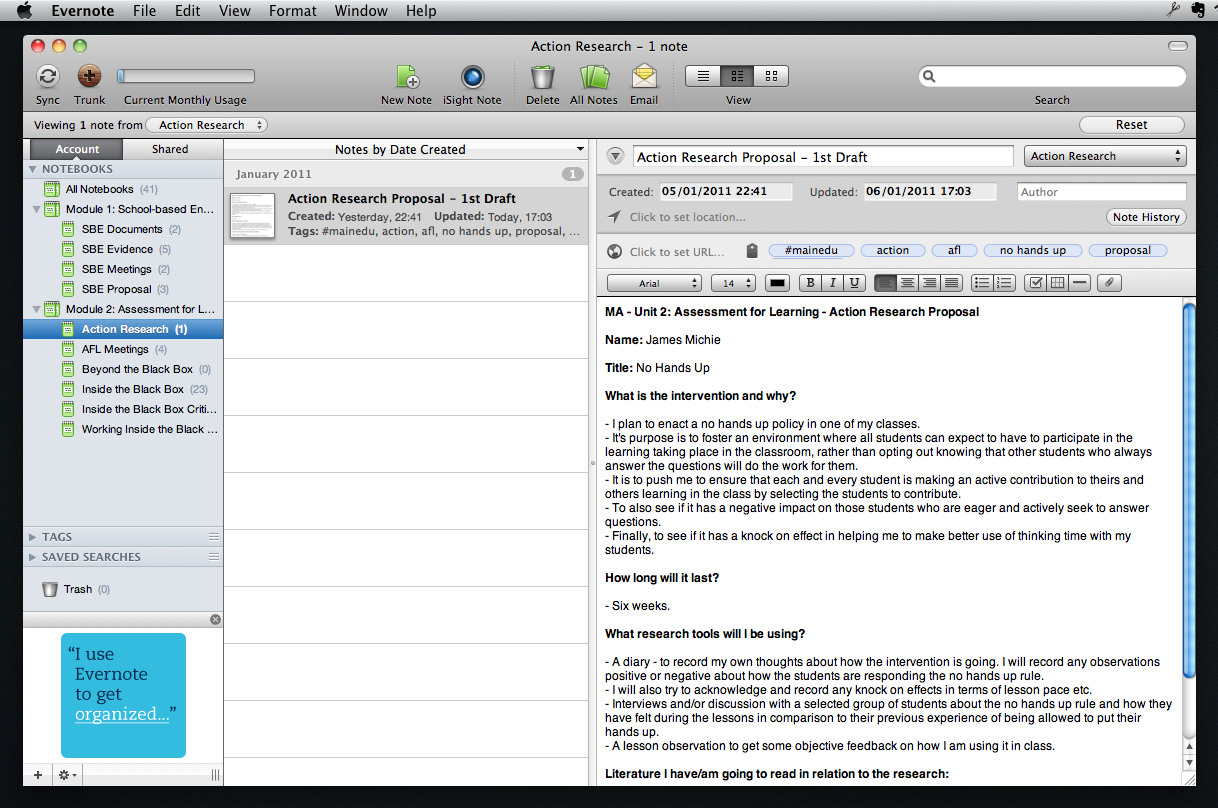1. Read at least one article/blog post about teaching and learning.
As an English teacher it is probably a little predictable that I read a lot, however I believe that it is important to keep up with what is happening in education. I have also learned as many of us do that teaching is a busy and time consuming affair, therefore I don’t often find extended periods of time to read. Instead, I use a small number of apps and devices to bring reading material to me in a manageable way. This includes Google reader as an RSS aggregator and apps such as Reeder and Instapaper which I access on my MBP and HTC Wildfire respectively. I save and export longer articles/papers to read on my Sony Reader. Without going in to too much detail here, this combination of devices allows me to read at whatever point of the day I am free to or feel like doing so. Hotspots are: on the bus (7:30 – 7:45) heading to work and when school has just ended (3:40 – 4:00).
I am of the mind set that the best teachers are those who not only work hard on their day-to-day classroom teaching but also continue to keep up with pedagogical ideas, theories, new technologies and what other teachers are doing in their classrooms. When I talk to other teachers on Twitter or at conferences they tend to fit in with this description and in turn tend to be innovative in their practice, open to new ideas and are ready to discuss and share their opinion about education. Reading, for me, is an integral part of this dialogue. It is important to be informed.
2. Make sure one of my lessons is not teacher directed.
Two issues here. 1. Teaching from the front of the classroom (lecture style) is a sure fire way to kill creativity, learning and can lead very quickly to behavioural issues. 2. Teaching from the front of the classroom is a sure fire way to drain yourself of energy and enthusiasm for what you are teaching. At the beginning of each week I review what I have planned to teach and then set about planning into each of my days a lesson (with a different class each day) where, after sharing the learning intentions and explaining what is to be achieved, I shut up and spend the majority of the lesson sat with my students helping and supporting them with their learning.
I use these lessons in a variety of ways, here are a couple of examples:
- Targeted support: I will group the class by ability and select a group to work with. During the lesson I will dedicate my time to that group – putting trust in the other students to get on and complete the work unaided. Some of the ways that I ensure the students are engaged in the work is by giving them a choice of what to do, in turn giving them ownership of their learning. I usually also set some sort of feedback exercise (not necessarily with me involved) where they are being relied upon to provide information. This allows me to then focus my time on the students I have decided to offer some more personal support to.
- Assessment: I believe it is important to assess students work with them so that they can understand the process and what I am looking for. If certain students have been making the same errors repeatedly I will use these non-teacher led lessons to sit with them and will mark their work throughout the lesson with them, almost as a form of 1-2-1 (directed) learning. As they try to tackle the ideas or skills they have been struggling with I can address them and get them to work through, making corrections. This is time consuming and I don’t get around to all of the students in a single lesson but the level of learning and progress that takes place is very high. Over the course of the year every student who needed this level of support will have gotten it.
To some this may not seem completely fair and that some students may not get the same level of personal input from me. However, I do not have a problem with this and even tell my classes at the beginning of the year that some of them will get more out of me than others. What I also explain though is that I am not the fountain of all knowledge, that I will help them to understand where to look for answers so that they can solve problems for themselves. I also explain that for some of them I will simply be a facilitator, for others they will need my knowledge and expertise. They are all starting at different points and the better I know them, the better I can adapt the way that I support them as individuals.
3. Stop and take a break.
I make sure that I use either the 20 minute break time or the 50 minute lunch time each day to stop and switch off from what I have been doing and am going to be doing that day. Where possible I try to do this at lunch however, I teach during lunch time on a Friday. Why do I do this? Becuase, education is my career but it does not define me and I am certainly not going to let it kill me. Teaching is intense. Particularly when you are dedicated. Therefore, it is important to give yourself a mental break. I achieve this in a variety of ways. I may simply sit somewhere in silence; other times I may sit and read or surf the net; and on some occasions I will go sit with others and catch up on the gossip. Whatever, I do I try to make sure that it has nothing to do with school.
To those teachers who say “I simply have no time to take a break”, I say: “you are doing something wrong then!” The most important thing to learn as a teacher is how to do each of the many different tasks that make up your day in both the most effective but least time consuming manner. This could be:
- using ‘assessment stickers’ that can be filled in with a few letters, numbers or ticks instead of writing out long paragraphs at the end of a student’s work.
- keeping an electronic mark book instead of a paper one – easily copied for use with other classes.
- setting extended homework projects that challenge your students but do not require that you are mark homework every couple of days.
- using peer assessment more often to make your students more critical learners while lightening your marking load.
- to collaborate with someone else on a scheme of work. You will not have to produce every single resource and your students will benefit from the ideas of two teachers, not just one.
There are many ways to cut down on your workload while ensuring that the learning in your classroom is engaging and effective. Putting just a few of these ideas in to practice would ensure that you have time to take that break. It is important to switch off. After all, you are only human contrary to popular belief! 🙂



